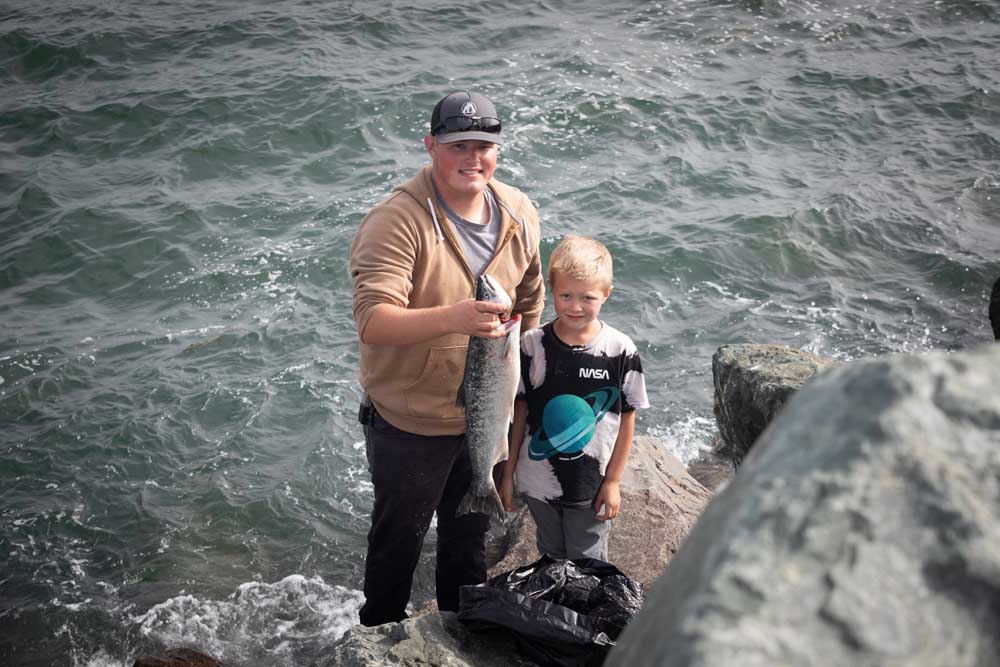Front-row fishing: Anglers flock to jetty for late-summer salmon action
Published 8:21 am Monday, September 27, 2021

- Kennewick resident Cory Tapani poses for a picture with his son, Leland, 6, after a successful first fishing trip to North Jetty.
ILWACO — Dana Smith braced against a refrigerator-sized boulder as a 10-pound coho salmon fought with ferocity, stripping line and slumping his fiberglass fishing rod in violet spurts as it raced seaward, nearly pulling him off balance and into the brackish Columbia River water along North Jetty at Cape Disappointment State Park.
Trending
“Grab the net!” Smith shouted to nearby friends who climbed over the rugged rocks to come to his aid, helping guide the weary fish into an awaiting net.
Smith, of Ocean Park, was among dozens of fishermen who had descended upon the jetty Thursday, Sept. 9, in hopes of catching a salmon as mature fish make their way up the Columbia River amid their annual spawning run.
The fishing action has been particularly fast and furious in recent weeks, with anglers routinely reaching their daily limit, often using a variety of tactics.
Trending
Silver spinners, featuring a shiny blade that mimics schooling baitfish, was the most common approach, particularly those sized between 3/4- to 1-ounce. Others relied on whole frozen anchovies, with tails bend and toothpicks inserted to keep their curved form, which causes the bait to spin in the current imitating an injured baitfish to initiate a strike.
There were also a few fly fishermen — each also with fish — a testament to the variety of methods that can result in a successful outing.
Jetty-fishing basics
Spawn Fly Fish owner (and jetty regular) Josh Phillips offered these tips for anyone fishing North Jetty for the first time:
• Be mindful of the tides and weather; conditions can change quickly on the jetty.
• Organize your gear before you go; simple tasks will be trickier on the slippery rocks.
• Bring a long-handled net to help land fish (and avoid the heartbreak of losing a trophy).
Be careful
The U.S. Army Corps of Engineers, which owns North Jetty and other navigation structures at the mouth of the Columbia often cautions that jetties aren’t intended for pedestrian use. They expose fishermen and sightseers to unfamiliar dangers, extending far into the wild, open ocean.
“The jetties are regularly pounded by Pacific Ocean waves between 10 and 20 feet high with winter storms bringing extreme waves in excess of 30 feet,” the corps warns.
The huge rocks that comprise the jetties become slippery when wet and can be treacherous at the bests of times. A slip and fall near the ocean end of North Jetty this summer resulted in a broken leg and a somewhat complicated rescue.
In late-2019, corps contractor J.E. McAmis finished extensive restoration of the 2.5-mile-long, 100-year-old North Jetty at an estimated cost of $80 million. More than 380 million pounds of rock were added to the jetty to strengthen it for decades to come. Initially, the top of the jetty was a smooth gravel surface to provide access for construction equipment and workers, but the ocean has clawed away much of this surface — particularly toward the jetty’s western end. This roadway will not be renewed, as it plays no part in the jetty’s essential functions.









